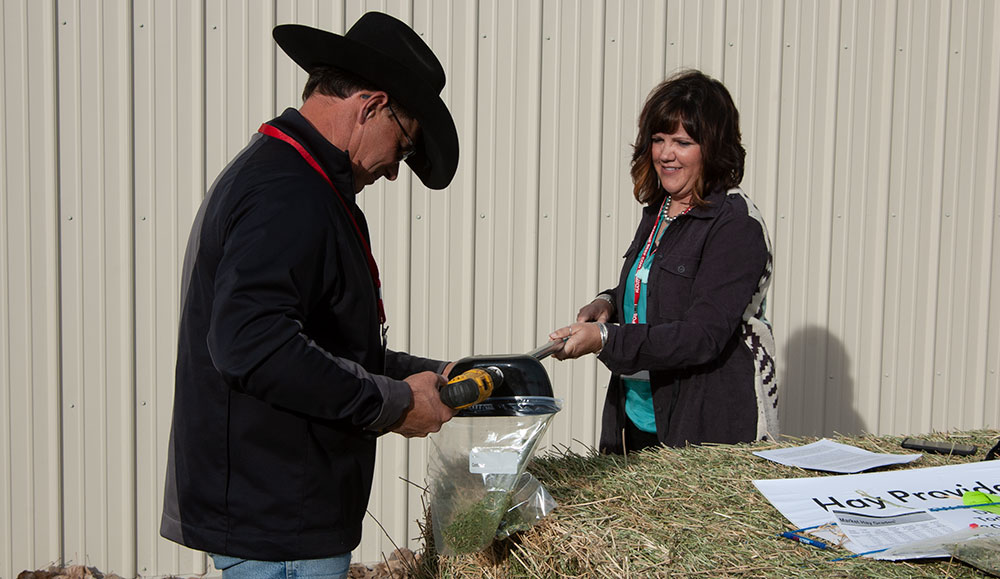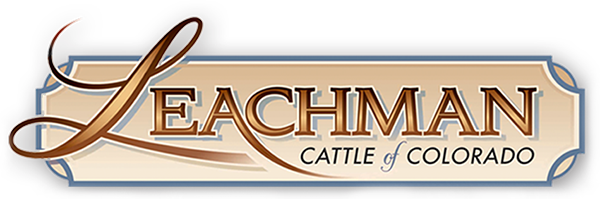
6 Tips to Make the Most of Feed Analysis
If you’ve never tested before, this is the year to do it, says NDSU livestock specialist.
MITCHELL, Neb. (Nov. 19, 2019) — Color, smell, texture, leafiness and harvest date can all offer clues about forage quality, but “sensory evaluation doesn’t cut it when it comes to feed analysis,” says North Dakota State University (NDSU) Area Livestock Extension Specialist Janna Block, who is based at the Hettinger Research Extension Center. Block shared comments during a hands-on breakout session at the 2019 Range Beef Cow Symposium hosted Nov. 18-20 in Mitchell, Neb.
 |
“Sensory evaluation doesn’t cut it when it comes to feed analysis,” said North Dakota State University (NDSU) Area Livestock Extension Specialist Janna Block. She suggested producers sample 10% of each lot or, at minimum, 20 core samples per lot. [Photos by Troy Smith] |
Block said forage testing is “worth it every year,” but added, “If you’ve never tested before, this is the year to do it and invest in the analysis.” She explained that with the variable — and wet — conditions of 2019, forage quality was difficult to discern without an analysis. As examples, she told of green crested wheatgrass harvested in August, and hay that was rained on with mold on the outside of the bale, but high crude protein quality inside the bale.
Block’s advice for incorporating forage analysis into an operation include:
- 1. Select a forage-testing lab and build a relationship with them. The National Forage Testing Association has a list of certified labs, available here. “Call them and have a conversation with them to answer your questions and give interpretation of results,” Block advised.
- 2. Visit with the lab about evaluating insoluble protein or acid detergent fiber (ADF). Block explained that moldy or old hay can have protein tied up with fiber, which may make it less accessible to the animal. “It’s not always about how good is the feed, but will the animal eat it?” she pointed out, adding, if more than 10% of the protein is insoluble, the lab can provide an adjusted crude protein.
- 3. Discuss wet chemistry vs. near-infrared reflectance spectroscopy (NIR) testing. Wet chemistry tests are considered the “gold standard,” but are more expensive, reported Block. NIR testing, which is based on light reflection and comparison to a feed library, has gotten better and is less costly, she added. Block said NIR works well for pure species samples, while wet chemistry analysis may be preferred for mixed species samples and if more information is being sought about contaminants and/or mineral composition of the sample.
- 4. Consider timing of testing. Block noted that harvested forage goes through a “sweat” after harvest, which makes it best to wait at least three weeks before conducting forage analysis. Ideally, she recommended, testing should be timed as close as possible to when the feed will be fed so it most represents the feed nutrition animals will be receiving.
- 5. Gather enough samples for analysis. One “lot” of hay is comprised of the same species harvested within 48 hours. Block said if the same field is harvested under different weather conditions or outside of that 48-hour time frame, it is best to group the forage for analysis into separate “lots.” She suggested the number of samples collected be 10% of each lot — or at minimum 20 core samples per lot. As an example, a lot with 600 bales could be 60 cores to be sampled, but in that instance 20 samples would be more feasible.
- 6. Get your own hay probe. Although hay probes are available for check out from most county extension offices, Block said that for $150 a producer can purchase their own hay probe and make it part of their yearly management. “I want people to start sampling and send their forage to a lab. Very few producers are using this, but it helps match feeding the forage at the right time and can minimize the need to feed other supplements,” Block concluded.
Listen to Block’s introduction and access resources she provided in the Newsroom at www.rangebeefcow.com. Contact your local university extension personnel for assistance in providing information about forage analysis and interpretation.
The Range Beef Cow Symposium XXVI was hosted Nov. 18-20 at the Mitchell Events Center at the Scotts Bluff County Fairgrounds, Mitchell, Neb. Sponsored by the Cooperative Extension Service and animal science departments of the University of Wyoming, South Dakota State University, Colorado State University and the University of Nebraska, the biennial symposium offers an educational program geared toward ranching in the West.
Angus Media provides online coverage of the event at www.rangebeefcow.com, courtesy of sponsorship by Leachman Cattle of Colorado. Visit the site Newsroom for summaries of the sessions, proceedings and PowerPoint presentations provided by the speakers, and audio if available. For more information about the website, contact the editorial team at 816-383-5200.
Editor’s Note: This summary was written under contract or by staff of the Angus Media, which retains the copyright. To request to reprint this article, contact Shauna Rose Hermel, editor, at 816-383-5270. PowerPoints are posted with permission of the presenter and may not be reproduced in whole or in part without the express permission of the presenter. Angus Media claims copyright to this website as presented. We welcome educational venues and cattlemen to link to this site as a service to their audience.
Angus Media's coverage of the event is made possible through collaboration with the event committee and via sponsorship of Leachman Cattle of Colorado. For questions about this site, or to notify us of broken links, click here. Look for additional coverage in the Angus Journal, the Angus Beef Bulletin, the Angus Journal Daily, and the Angus Beef Bulletin EXTRA.



